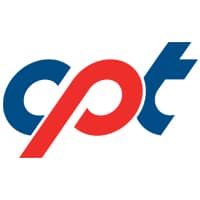Haircare product testing to ensure safety and performance will ultimately determine product success and longevity on the market. For best results, precisely planned safety and performance evaluations are required. Moreover, international regulatory agencies require a demonstration of product safety to ensure that new-to-market products will not pose health risks or harm to consumers. As such, product manufacturers and distributors are responsible for collecting ample information on their products’ safety and efficacy before going to market. Comprehensive haircare product performance testing typically has two key phases: pre-clinical testing followed by a clinical in-use trial.

Haircare Product Testing Phase I: Pre-Clinical Testing
Because haircare products will contact the skin, hair, and potentially the eyes, pre-clinical dermal and ocular toxicity and irritation testing is required early in the safety evaluation process. Such testing includes dermal sensitization tests conducted on reconstructed human epidermis to determine skin response and ocular irritation tests conducted on corneal models to evaluate irritancy. Pre-clinical studies occur prior to clinical studies so that panelists’ safety is assured. The Laboratory Principal Investigator, when required, will initiate IRB review, to ensure subject safety and to meet regulatory requirements. Pre-clinical data is required for IRB clinical trials and is reviewed before clinical testing of all trials.
Haircare Product Testing Phase II:
Clinical
Appropriate study design is the key factor for effective haircare product performance evaluations. Initial preparations should identify and clearly outline study objectives, the study timeline, panelist characteristics, data to be collected, and data analysis methodology. After the initial planning stage has been completed, clinical product safety and performance evaluations can begin. Panelists are recruited and scheduled according to the initial study design and timeline. Clinical data can vary in type, complexity, and collection intervals. Because clinical data collection timelines may extend over months, the planning and execution of the clinical studies should begin as early as possible to meet the desired market release date. Depending on the overall study objectives, some data collection approaches may include panelist surveys and/or precise measurements made by specialized scientific equipment or assays intended for particular haircare product performance tests, such as:
- Trichological (Hair Count) Analysis. The trichological analysis determines changes in hair growth patterns. During this test, a trained professional uses a dermascope or videoscope to survey the scalp and record changes in observed hair growth patterns.
- Traction Test. The Traction Test also known as Gravimetric “Pull” Analysis, “Sabouraud’s sign,” or “the pull-out sign” is used to measure hair shedding patterns. Prior to shampooing, 20-60 strands of subjects’ hair are grasped at the base of the strands and tugged firmly away from the scalp. Active hair shedding is indicated by pulling more than 10% of strands from the scalp.
- “Hair Pluck” Test. The “Hair Pluck” Test evaluates changes in hair growth cycles and in hair breakage over time using hair shafts “plucked” from the scalp.
- Regimented Combing Technique. The Regimented Combing Technique is used to assess changes in hair fallout rates. For this test, panelists are asked to use a specific combing technique to evaluate hair fallout rates.
- Tensile Test. Tensile Tests measure any alterations in hair strength and resilience. Hair tensile strength is measured using the Dia-Stron Mini Tensile Tester (MTT). The MTT device uses 3-point bending and torsion tests to measure the force overtime required to elongate and break a strand of hair.
Hiring a team of experts with proficiency in haircare product performance evaluations is especially beneficial during the clinical phase as they can help identify and resolve issues early, maintaining the evaluation process timing without sacrificing the quality of the study.
Summary
Positive market reception of new haircare products and formulations hinges on the safety and efficacy of the product. Successful haircare product performance trials feature well-considered study designs and methodology that meets study objectives that cover the marketing claims. The most efficient and effective safety and performance evaluations are planned and performed by seasoned haircare experts like the team of licensed cosmetologists and clinical specialists at CPT℠ Labs.

